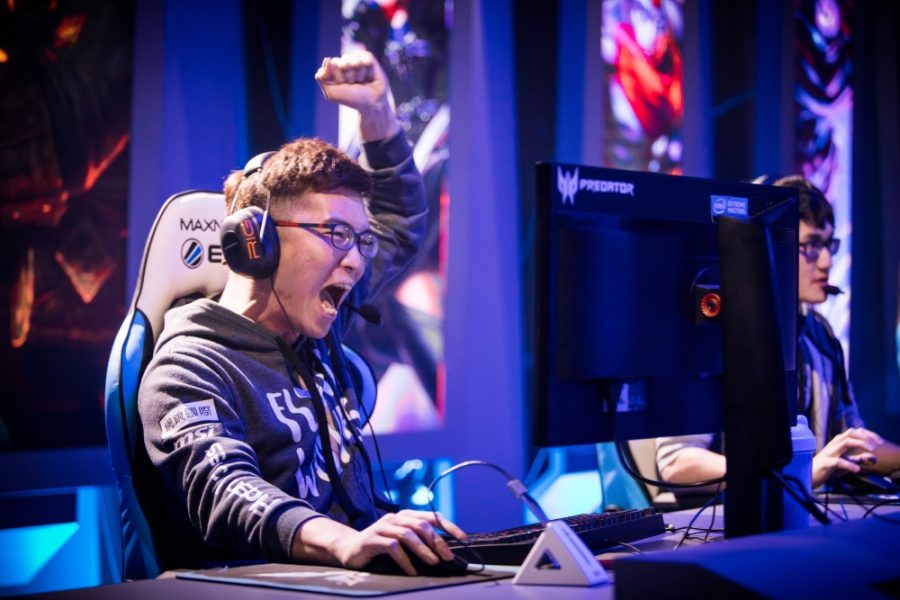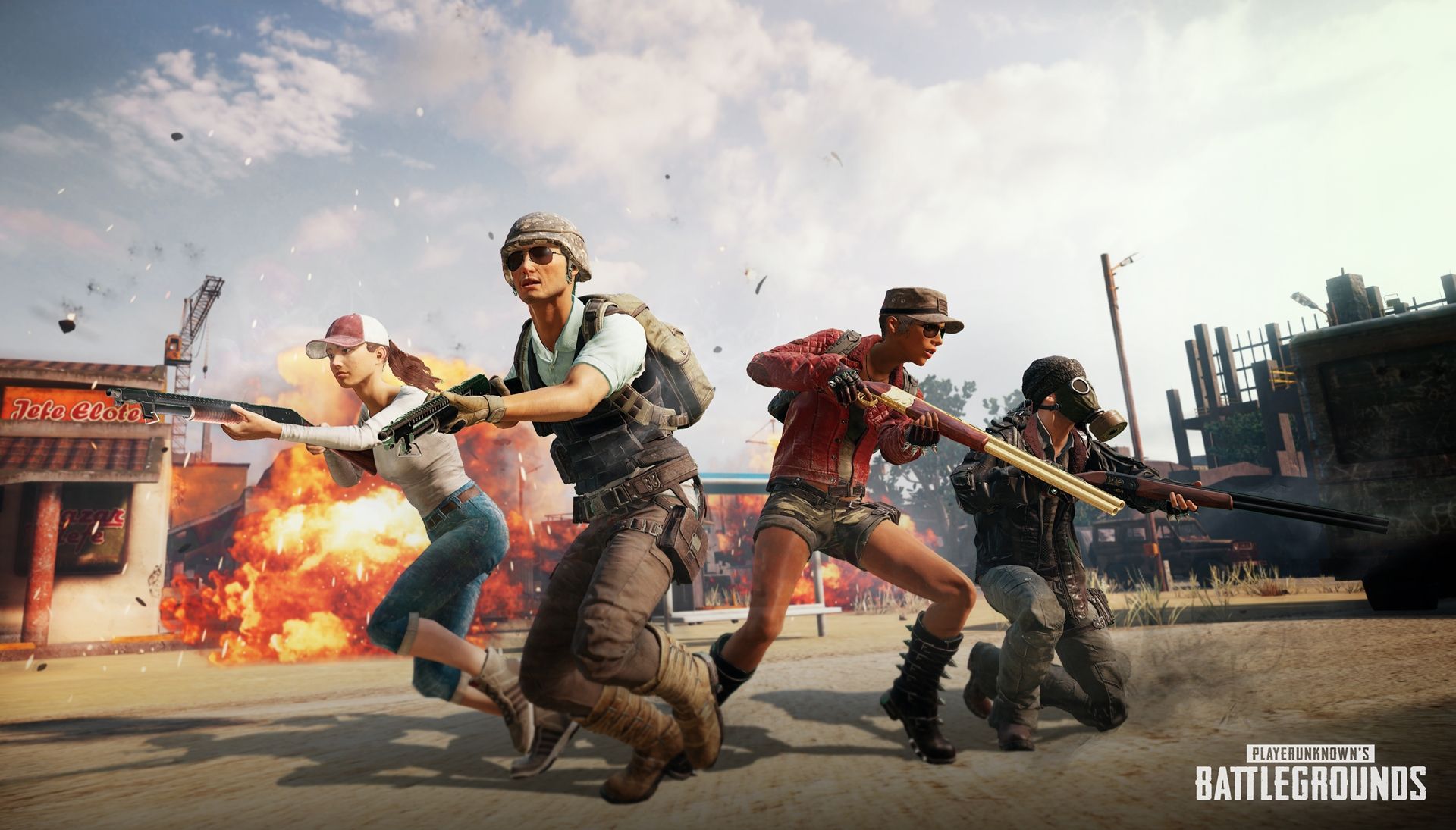
“Esports is the natural evolution of multiplayer gaming,” Spike Laurie, ESL’s VP of Global Publisher and Developer Relations, told me as we sat down together at E3 2018.
That’s a succinct and apt description of esports but it’s still not an activity for everyone. Newzoo has reported that the global esports economy should be worth just shy of $1 billion this year, but when looking at a traditional sport like NFL, which generated over $13 billion in 2016, that’s a drop in the bucket.
“There’s an appeal to the core gaming audience, but how do you blend that and move to a mass audience. I think we’re going to have some misfires, but we’ll get there,” Mark Subotnick, Director of Business Development focusing on Esports and PC Games at Intel, commented in advance of an esports panel hosted by Dell.
“It’s really awesome to watch Ninja play solo… because his skill is amazing and it’s really compelling, but I’m not going to get my mom to watch a quarter final or a final. I think we need to get to the point where a finals is equivalent to an NBA, MLB, Super Bowl or FIFA UEFA Championship where you actually have people who don’t normally watch this thing recognize that it’s a big event and want to see the best of the best compete. They know there will be some halftime show or ads that may be worth watching. We’re a long way away from that but I am a believer that we’re going to get there.”

During the Dell esports panel, Sarah Needleman, a reporter for The Wall Street Journal, talked about covering games for the Journal but admitted she does not know what’s going on in most esports matches. Is this a problem that the industry needs to deal with? Not necessarily, Laurie countered.
“I understand video games. I don’t understand NFL. There seems to be a lot of faffing around. Not much using the ball,” said Laurie, who’s originally from England and used to serve as ESL’s UK Director. “Or someone might not understand Australian Rules Football. Or what are the rules of curling?
“Millennials, they have grown up around [games]. They’re playing more video games than they’re playing football or basketball. So, for them, understanding a MOBA, that you have to defeat the Nexus and you have to go to the towers is as simple as someone understanding a touchdown is worth how many points? And [Needleman] was right to identify there’s an air gap. There’s an air gap of knowledge between the older generation or this [younger] generation. I’m 31. Snapchat’s beyond me.”
So education is certainly one challenge, but ultimately as the younger demographic ages, they will presumably stick with esports, just as older generations have followed basketball or football their entire lives.
“There are a lot of millennials who really understand and get it and in 10 years, 20 years time, that’s going to cycle through and that’s the beauty of it,” Laurie said. “So, I would challenge [Needleman] to immerse herself.”
The bigger challenge for the esports industry may just be capturing the competitive spirit that defines the pastime. “It’s that tribal kind of love of competitive gaming,” Laurie stated.
Some companies perhaps get a little bit starstruck by, ‘Oh, I want to be in a stadium or how do I make my game end up there?’
“There are people like myself and [ESL CEO] Ralf [Reichert] and many out there who are gamers who believe that the maximum enjoyment you can have from a game is from a competitive experience. And it’s about drawing that out. It’s sort of like as a kid I remember sitting on the sofa at my friend’s house playing Goldeneye on the N64, for example. There were eight of us. So, four of us played and four of us watched. That is a great competitive experience which you want to watch, you want to be part of, whether you’re actually playing or spectating.
“I feel that seeing what esports has become today with these big stage events and all the cool, sexy stuff that we’re doing, it’s really the same, you know? I’m watching people that I love or that I aspire to be playing [as] and enjoying themselves, competing at a very high level. I’m a part of that experience. It’s very tribal. We’re all together and we all love the game. When I go home, I’m going to go and play that game as well and I’m going to then be like, ‘Cool, I learned something today.’ Or that’s enthused me to try to something different or do something new. I think that for me is how to distill esports.”
What’s interesting, and definitely encouraging for the esports industry, is that not everyone who watches a big match is playing that game. Newzoo found that when examining the combined fanbase of the top three global esports franchises (League of Legends, CS:GO, and Dota 2), 23% of the fanbase (both players and viewers) in the 10 Western countries watch esports content but do not play the games, which means a total of 42% of these esports viewers don’t play the game they watch. “There’s room for growth. I think we’re just scratching the surface,” commented Subotnick.
Esports at its heart is very aspirational. It’s that feeling that anyone can play and succeed that the entire industry must rally around, Laurie noted. And it’s why he stresses with publishers and developers looking at getting into esports that they need to focus on smaller, accessible events, not just majors.
“Some companies perhaps get a little bit starstruck by, ‘Oh, I want to be in a stadium or how do I make my game end up there?’ The answer’s always the same. The publisher or the developer just needs to focus on building a great competitive game and that’s all they have to focus on. Then the rest will come,” Laurie said.

Subotnick had the same message: “Because of my role, I get a lot of people pitching me, saying, ‘I’ve got the next big esport.’ I almost want to hang up or delete the email because you should be calling me to say you’re working on an amazing game and it’s really competitive and fun. You can’t make an esports game. You can try and will probably fail. The community decides.”
Laurie continued, “One of the things that as ESL we really champion is the ‘Zero to Hero’ narrative, the complete ecosystem. You see these sorts of words like pro league or a championship series or world cup, all this stuff. That’s super important. But if you don’t have the players underneath to feed into that, your pro league will never get anywhere or your world cup will never get anywhere. It’s really important that you focus on the bottom first. The unsexy stuff. The stuff that doesn’t get the big dollars or the big TV rights or the big broadcast stuff.”
It’s all about giving hope to people who are just playing for the fun of competition in their homes or maybe are just trying to win small prizes like headsets. “When you build that out, then you can start building the layers above it and you will reach those sorts of ESL One, Intel Extreme Masters, legendary stadium events,” Laurie said.
He remarked that some publishers have labeled esports as “the world’s biggest niche,” but the industry is getting closer and closer to losing that niche status everyday.
“We’re seeing a lot of big brands come into the space,” Laurie affirmed. “We’ve had big successes this year with Mercedes, for example, and our partnership with Intel is going strength to strength, but there are a lot of brands that now want to get into the space. How do they do it in a way that is authentic and credible and doesn’t alienate an already advertising averse audience?”
These people aren’t people that like to be advertised to… It’s really important that brands get it right, because that investment from brands is one of the things that’s going to help drive esports to that next level.
Laurie surmised that a sizable portion of the esports audience is likely running ad block on their PC, so the advertising component of esports is definitely in for a challenge.
“These people aren’t people that like to be advertised to. I mean, they turn up 20 minutes late to the cinema to miss the adverts on purpose,” he said. “And so, it’s really important that brands get it right, because that investment from brands is one of the things that’s going to help drive esports to that next level.”
As esports continues to evolve, the genres that are entering the space present new challenges. It’s one thing for developers to make a game that’s competitive and fun, but it’s another entirely to create a title that lends itself to streaming, spectating and broadcasting. Battle royale has taken the industry by storm with PUBG and now Fortnite, but the esports world is just figuring it out.
“Fortnite is a great example of a wonderful, competitive, fun game as is anything in the battle royale space. And I think that’s a new paradigm. We’re only now just trying to figure out how to do battle royale, you know? That’s a challenge and it’s a challenge that we love,” Laurie said, adding that battle royale shows how much potential there is with “genres of games that are still probably untouched in the esports world.”
Another major opportunity for esports is extending beyond the PC. As Nintendo has shown with games like Splatoon and Smash Bros, esports can do well on consoles, and Laurie sees mobile as the next big frontier.
“The mobile games are becoming really good and really competitive and there’s a big upswing in the amount of developers that are invested in competitive mobile games,” he noted. “I think that opens up a new segment, a new market. And it opens up a more mainstream market and helps sort of get rid of this stigma a little bit. A thing still persists in esports that it’s really for PC hardcore gamers and I think our feeling is that any game that’s competitive [can be an esport].”

As with traditional sports, professionalism is paramount if esports is going to reach the next level. Pushing back against cheating, doping, and toxicity is all necessary.
Subotnick said that Intel is going “to start tackling things like cheating,” but he doesn’t want to label technology as anti-cheating.
“I’m moving away from saying things like anti-cheating and saying building systems of trust,” he said. “Anti-cheat means we’re entering a Cold War. There are a number of companies doing that and we’ll work with them on a developer relations level but we also look at all the technology we have and improving trust will make it better for PC, mobile, everyone and then we’ll benefit indirectly from that.”
Laurie pushed back a bit on the presence of toxicity in esports at the highest levels, pointing more to the problems in gaming as a whole.
I think doping’s one of those fun things [to talk about because] it’s quite salacious, but actually I think it’s a little overblown in the reality of pro esports.
“The teams, I think, conduct themselves with great [respect]. Obviously, [toxic] things do happen within the games industry in general. But I think that it’s super important that we set a great example,” he remarked. “I think the players, the teams, the work that the World Esports Association is doing, for example, with the teams, the work that the Esports Integrity Coalition is doing, things like that, all super important. Just like a Premiership football player or an NFL player is held to a high standard, right? They can’t go and crash a Lamborghini into a hotel late at night and think that there’s going to be no repercussions.”
And while there have been reports of pro players taking drugs like Adderall to get a competitive edge, Laurie said flatout that esports does not have a doping problem.
“We work with the World Anti-Doping Association and we’ve been working with them for the last three years. We’re the first company to do that and we’ve never had a player test positive for an illegal substance at an ESL event,” he stated.
“Look, I think doping’s one of those fun things [to talk about because] it’s quite salacious, but actually I think it’s a little overblown in the reality of pro esports.”
Esports has a ways to go to reach the heights of NFL or FIFA, but the trajectory looks good as far as ESL is concerned.
“I think that we’re in a great position,” Laurie said. “Our stadium events are growing and growing. We’re doing 11 a year now, with Intel Extreme Masters really being the flagship and the mecca of esports if you will. We had 165,000 people go through the doors over two weekends this year, which is great, and over 65 million tuning in and watching that.
“We want to build out these tentpole esports events throughout the year… And I think there are lots of cool spaces that we’re looking at. The collegiate space for example. We did a test a few weeks ago with Big East, which was great to work with a college conference like that and really exciting. And then, what I think we’re seeing with the new games coming out, ESL’s continuing to be on the leading edge of that. The battle royale genre is a great example. The first pro PUBG event was a year ago almost at GameStop. And then, that led into IEM Oakland. That led into IEM Katowice. We’re still just scratching the surface with battle royale.”
 GameDaily.biz © 2025 | All Rights Reserved.
GameDaily.biz © 2025 | All Rights Reserved.